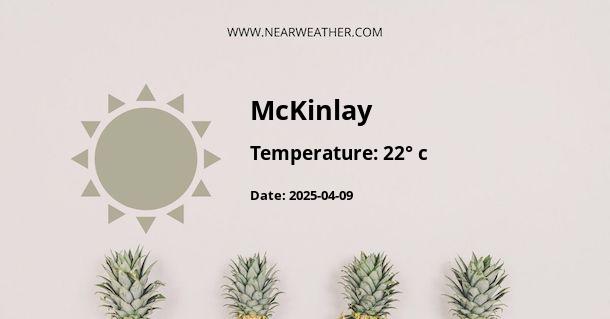Climate and Weather in McKinlay, Australia
Welcome to McKinlay, Australia! Located in the heart of the Outback, McKinlay experiences a unique climate and weather patterns throughout the year. This article will provide you with detailed information about the climate in McKinlay, including temperature ranges, rainfall patterns, and other important weather factors.
Geographical Location
McKinlay is a small town situated in the McKinlay Shire in Queensland, Australia. It is located approximately 1,200 kilometers northwest of Brisbane and 100 kilometers east of Mount Isa. The town is surrounded by vast open plains, giving it a quintessential Outback feel.
Temperature
McKinlay experiences a hot desert climate, characterized by high temperatures throughout the year. Summers in McKinlay, which run from December to February, are extremely hot, with average maximum temperatures ranging from 35 to 40 degrees Celsius (95 to 104 degrees Fahrenheit). Heatwaves are not uncommon during this period, with temperatures occasionally reaching above 45 degrees Celsius (113 degrees Fahrenheit).
Winters in McKinlay, from June to August, are milder but still warm. Average maximum temperatures during this time range from 20 to 25 degrees Celsius (68 to 77 degrees Fahrenheit). Nights can be cool, with temperatures dropping to around 5 to 10 degrees Celsius (41 to 50 degrees Fahrenheit).
It is important to note that McKinlay experiences significant temperature variations between day and night throughout the year. This diurnal temperature range can be as high as 20 to 25 degrees Celsius (36 to 45 degrees Fahrenheit).
Rainfall
McKinlay has a semi-arid climate with low annual rainfall. The majority of the rainfall occurs during the summer months, with January and February being the wettest months. The average annual rainfall in McKinlay is around 350 to 400 millimeters (13.8 to 15.7 inches).
Due to the arid climate, droughts are common in McKinlay, and the region has experienced several prolonged dry periods in the past. It is important for the local community to manage water resources efficiently and implement sustainable practices to mitigate the impact of droughts.
Wind and Dust Storms
McKinlay experiences strong winds throughout the year, which is typical of the Outback region. The prevailing winds come from the northwest and can reach speeds of up to 40 to 50 kilometers per hour (25 to 31 miles per hour).
Dust storms are also a common occurrence in McKinlay and other parts of the Outback. These storms can be quite severe, reducing visibility and causing potential health hazards. It is advisable to stay indoors and take necessary precautions during dust storms.
Extreme Weather Events
McKinlay, like many other parts of Australia, is susceptible to extreme weather events such as cyclones and thunderstorms. Cyclones can occur between November and April, with the peak season typically in January and February. These tropical storms can bring heavy rainfall, strong winds, and flooding to the region.
Thunderstorms are more frequent during the summer months and can produce localized heavy rainfall, lightning, and even hail. It is important to stay informed about weather forecasts and follow any warnings or advice issued by local authorities during these events.
Conclusion
McKinlay, Australia, experiences a hot desert climate with high temperatures, low annual rainfall, and strong winds. The town is characterized by its arid landscape and is prone to extreme weather events such as cyclones and thunderstorms. Understanding the climate and weather patterns in McKinlay is crucial for residents, visitors, and industries operating in the region.
A - McKinlay's Latitude is -21.266670 & Longitude is 141.300003.
A - Weather in McKinlay is 22° today.
A - Climate Conditions in McKinlay shows clear sky today.
A - Humidity in McKinlay is 64% today.
A - Wind speed in McKinlay is 14.87 km/h, flowing at 114° wind direction. today.
